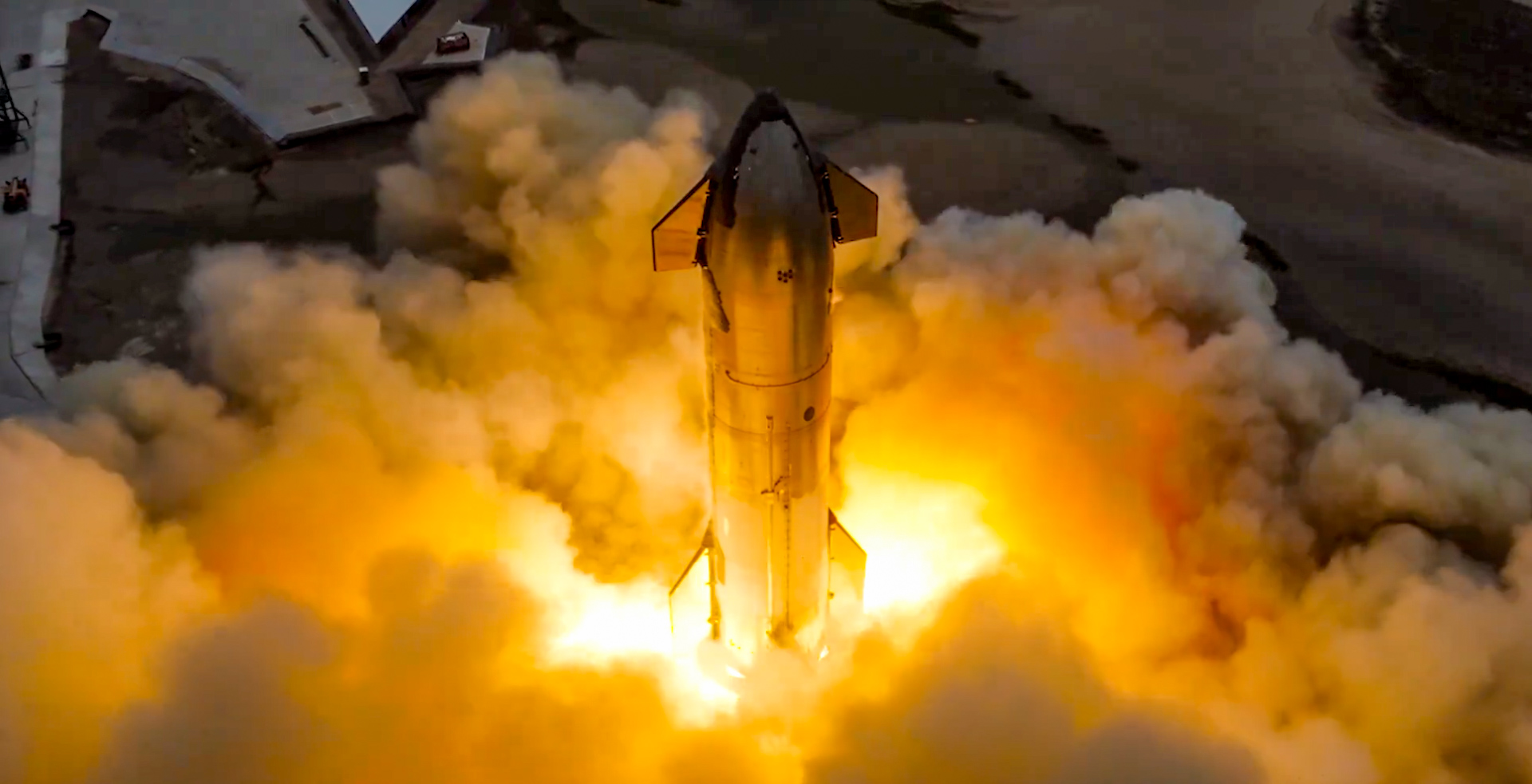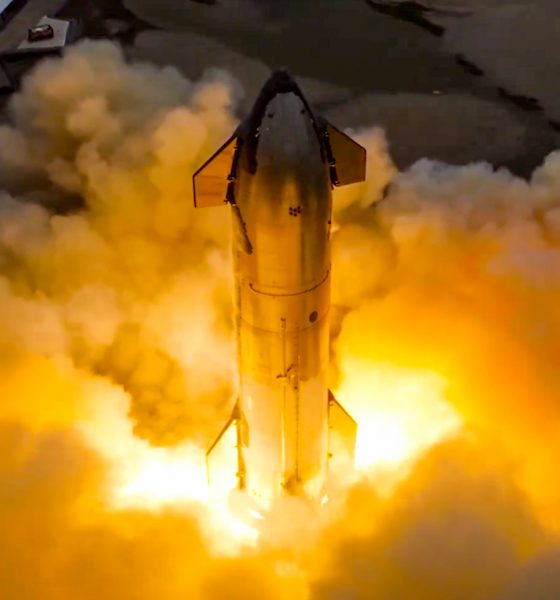SpaceX issued a statement regarding the extensive delays related to Starship’s fifth test flight (IFT-5). The aerospace company also revealed a new potential date for the next flight, which will come in November.
SpaceX has been attempting to bring Starship’s next test flight to fruition for some time now, and CEO Elon Musk said that IFT-5 would take place in early August. He revealed this potential date in early July as SpaceX was working to resolve issues from the fourth test flight.
However, that date came and went. As the company continued to await FAA approval, nothing seemed to move. This has now made SpaceX release a lengthy statement regarding the delays, what caused them, and what could be next.
Ready Since August
SpaceX said both Starship and Super Heavy vehicles have been ready to launch since the first week of August. The next flight will attempt the most ambitious objective in the Starship testing program: return the Super Heavy booster to the launch site and catch it in mid-air.
Each Starship test flight has resulted in subsequent advances in the program. Every flight has accomplished more than the previous, showing tremendous progress and giving credibility to Elon Musk’s goal of having unmanned missions to Mars in just two years.
However, SpaceX says the delays in the Starship program are a culmination of several things:
“It’s understandable that such a unique operation would require additional time to analyze from a licensing perspective. Unfortunately, instead of focusing resources on critical safety analysis and collaborating on rational safeguards to protect both the public and the environment, the licensing process has been repeatedly derailed by issues ranging from the frivolous to the patently absurd. At times, these roadblocks have been driven by false and misleading reporting, built on bad-faith hysterics from online detractors or special interest groups who have presented poorly constructed science as fact.”
Launch License Date Estimate
The Federal Aviation Administration (FAA) has to approve the test flight to launch before SpaceX can make any moves.
Although the agency previously gave SpaceX a launch license estimate of mid-September, the FAA has given a new estimate because of a “superfluous environmental analysis”:
“We recently received a launch license date estimate of late November from the FAA, the government agency responsible for licensing Starship flight tests. This is a more than two-month delay to the previously communicated date of mid-September. This delay was not based on a new safety concern, but instead driven by superfluous environmental analysis. The four open environmental issues are illustrative of the difficulties launch companies face in the current regulatory environment for launch and reentry licensing.”
Rebuttal to Environmental Issues
SpaceX says there are several issues with reporting related to the environmental impacts of the Starship program:
- Water-cooled steel flame deflector:
- SpaceX never operated the deflector without a permit
- The deflector does not spray pollutants into the surrounding environment, and uses drinking water
- SpaceX was asked by the EPA to apply for an individual discharge permit, despite the operation having “little to nothing in common with industrial waste discharges covered by individual permits.”
- SpaceX paid fines “tied to disagreements over paperwork…so it can focus its energy on completing the missions and commitments we have made”
- Reports of operating in defiance of environmental regulation
- SpaceX calls it “demonstrably false”
- Argues delays in licensing are for “unreasonable and exasperating reasons”
- FAA consultation with U.S. Fish and Wildlife Services evaluated sonic booms and found they have “no significant impacts to the environment”
- SpaceX has extensive mitigations in place to protect birds near Starbase, and has for nearly 10 years
- “To date, the monitoring has not shown any population-level impacts to monitored bird populations, despite unsubstantiated claims to the contrary that the authors themselves later amended.”
- IFT-5 will take place outside of nesting season
With this being said, it will be interesting to see if SpaceX’s next Starship test flight will come sooner than November, although the FAA’s estimated date will likely stay in place.
I’d love to hear from you! If you have any comments, concerns, or questions, please email me at joey@teslarati.com. You can also reach me on Twitter @KlenderJoey, or if you have news tips, you can email us at tips@teslarati.com.

Elon Musk
Elon Musk’s X will start using a Tesla-like software update strategy
The initiative seems designed to accelerate updates to the social media platform, while maintaining maximum transparency.

Elon Musk’s social media platform X will adopt a Tesla-esque approach to software updates for its algorithm.
The initiative seems designed to accelerate updates to the social media platform, while maintaining maximum transparency.
X’s updates to its updates
As per Musk in a post on X, the social media company will be making a new algorithm to determine what organic and advertising posts are recommended to users. These updates would then be repeated every four weeks.
“We will make the new 𝕏 algorithm, including all code used to determine what organic and advertising posts are recommended to users, open source in 7 days. This will be repeated every 4 weeks, with comprehensive developer notes, to help you understand what changed,” Musk wrote in his post.
The initiative somewhat mirrors Tesla’s over-the-air update model, where vehicle software is regularly refined and pushed to users with detailed release notes. This should allow users to better understand the details of X’s every update and foster a healthy feedback loop for the social media platform.
xAI and X
X, formerly Twitter, has been acquired by Elon Musk’s artificial intelligence startup, xAI last year. Since then, xAI has seen a rapid rise in valuation. Following the company’s the company’s upsized $20 billion Series E funding round, estimates now suggest that xAI is worth tens about $230 to $235 billion. That’s several times larger than Tesla when Elon Musk received his controversial 2018 CEO Performance Award.
As per xAI, the Series E funding round attracted a diverse group of investors, including Valor Equity Partners, Stepstone Group, Fidelity Management & Research Company, Qatar Investment Authority, MGX, and Baron Capital Group, among others. Strategic partners NVIDIA and Cisco Investments also continued support for building the world’s largest GPU clusters.
News
Tesla FSD Supervised wins MotorTrend’s Best Driver Assistance Award
The decision marks a notable reversal for the publication from prior years, with judges citing major real-world improvements that pushed Tesla’s latest FSD software ahead of every competing ADAS system.

Tesla’s Full Self-Driving (Supervised) system has been named the best driver-assistance technology on the market, earning top honors at the 2026 MotorTrend Best Tech Awards.
The decision marks a notable reversal for the publication from prior years, with judges citing major real-world improvements that pushed Tesla’s latest FSD software ahead of every competing ADAS system. And it wasn’t even close.
MotorTrend reverses course
MotorTrend awarded Tesla FSD (Supervised) its 2026 Best Tech Driver Assistance title after extensive testing of the latest v14 software. The publication acknowledged that it had previously criticized earlier versions of FSD for erratic behavior and near-miss incidents, ultimately favoring rivals such as GM’s Super Cruise in earlier evaluations.
According to MotorTrend, the newest iteration of FSD resolved many of those shortcomings. Testers said v14 showed far smoother behavior in complex urban scenarios, including unprotected left turns, traffic circles, emergency vehicles, and dense city streets. While the system still requires constant driver supervision, judges concluded that no other advanced driver-assistance system currently matches its breadth of capability.
Unlike rival systems that rely on combinations of cameras, radar, lidar, and mapped highways, Tesla’s FSD operates using a camera-only approach and is capable of driving on city streets, rural roads, and freeways. MotorTrend stated that pure utility, the ability to handle nearly all road types, ultimately separated FSD from competitors like Ford BlueCruise, GM Super Cruise, and BMW’s Highway Assistant.
High cost and high capability
MotorTrend also addressed FSD’s pricing, which remains significantly higher than rival systems. Tesla currently charges $8,000 for a one-time purchase or $99 per month for a subscription, compared with far lower upfront and subscription costs from other automakers. The publication noted that the premium is justified given FSD’s unmatched scope and continuous software evolution.
Safety remained a central focus of the evaluation. While testers reported collision-free operation over thousands of miles, they noted ongoing concerns around FSD’s configurable driving modes, including options that allow aggressive driving and speeds beyond posted limits. MotorTrend emphasized that, like all Level 2 systems, FSD still depends on a fully attentive human driver at all times.
Despite those caveats, the publication concluded that Tesla’s rapid software progress fundamentally reshaped the competitive landscape. For drivers seeking the most capable hands-on driver-assistance system available today, MotorTrend concluded Tesla FSD (Supervised) now stands alone at the top.
News
Elon Musk’s Grokipedia surges to 5.6M articles, almost 79% of English Wikipedia
The explosive growth marks a major milestone for the AI-powered online encyclopedia, which was launched by Elon Musk’s xAI just months ago.

Elon Musk’s Grokipedia has grown to an impressive 5,615,201 articles as of today, closing in on 79% of the English Wikipedia’s current total of 7,119,376 articles.
The explosive growth marks a major milestone for the AI-powered online encyclopedia, which was launched by Elon Musk’s xAI just months ago. Needless to say, it would only be a matter of time before Grokipedia exceeds English Wikipedia in sheer volume.
Grokipedia’s rapid growth
xAI’s vision for Grokipedia emphasizes neutrality, while Grok’s reasoning capabilities allow for fast drafting and fact-checking. When Elon Musk announced the initiative in late September 2025, he noted that Grokipedia would be an improvement to Wikipedia because it would be designed to avoid bias.
At the time, Musk noted that Grokipedia “is a necessary step towards the xAI goal of understanding the Universe.”
Grokipedia was launched in late October, and while xAI was careful to list it only as Version 0.1 at the time, the online encyclopedia immediately earned praise. Wikipedia co-founder Larry Sanger highlighted the project’s innovative approach, noting how it leverages AI to fill knowledge gaps and enable rapid updates. Netizens also observed how Grokipedia tends to present articles in a more objective manner compared to Wikipedia, which is edited by humans.
Elon Musk’s ambitious plans
With 5,615,201 total articles, Grokipedia has now grown to almost 79% of English Wikipedia’s article base. This is incredibly quick, though Grokipedia remains text-only for now. xAI, for its part, has now updated the online encyclopedia’s iteration to v0.2.
Elon Musk has shared bold ideas for Grokipedia, including sending a record of the entire knowledge base to space as part of xAI’s mission to preserve and expand human understanding. At some point, Musk stated that Grokipedia will be renamed to Encyclopedia Galactica, and it will be sent to the cosmos.
“When Grokipedia is good enough (long way to go), we will change the name to Encyclopedia Galactica. It will be an open source distillation of all knowledge, including audio, images and video. Join xAI to help build the sci-fi version of the Library of Alexandria!” Musk wrote, adding in a later post that “Copies will be etched in stone and sent to the Moon, Mars and beyond. This time, it will not be lost.”










